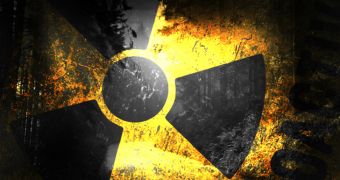As I was browsing the web earlier this week (mind you, I am not a slacker, this is part of my job), a peculiar piece of news caught my attention.
This news sounds like some scary story one might expect to hear people tell while around a camp fire or for Halloween, but, as it turns out, it has nothing to do with fiction. Not to beat about the bush, what sparked my interest was a report saying that so-called undead forests can now be found all around the site of the Chernobyl nuclear plant in Ukraine. Unlike regular trees, which sooner or later wither and die, the ones that make up these woods appear frozen in time. Simply put, they seem utterly unable to decompose. However, before delving into the mystery surrounding these zombie-like forests, perhaps some explanations are in order.
Crash course in the Chernobyl nuclear disaster
Japan’s Fukushima nuclear plant might be making headlines these days, what with Tepco’s constant struggles to keep things at the facility well under control, but Ukraine’s Chernobyl nuclear power plant is no stranger to media attention either. Thus, back in 1986 (on April 26, to be more precise), this facility was the scene of a major nuclear disaster widely considered the worst to have until now been recorded by history. On said date, the nuclear plant was hit by an explosion and a fire, and ended up releasing whopping amounts of radioactive particles into the atmosphere. Over 30 people died in this accident alone, and researchers are still trying to make head and tail of the effects that the disaster has had on human health and the natural world. Simply put, the 1986 nuclear disaster was nothing short of a blast.
So what does Chernobyl have to do with zombie woods?
Oddly enough, it would appear that the radioactive material that was released when said facility went haywire is also the reason that the woods surrounding the facility are now neither withering nor developing. Truth be told, having a nuclear disaster leave a bunch of trees dead doesn’t in the least sound mind-boggling. Having a nuclear disaster turn forests into zombies, on the other hand, is not something that us ordinary folks get to hear about all that often. I have no intention of prolonging the suspense, so here is what specialists think happened: apart from killing the trees, the radioactive material made minced meat of microbes, fungi and several insect species in the region. Apparently, the microbes, fungi and insects that perished in this nuclear disaster all had a very successful career in decomposing organic matter. Hence the fact that, once they were wiped off the face of the Earth (OK, not Earth, just this region in Ukraine; I was merely trying to add a little drama to my writing), trees in the proximity of the Chernobyl nuclear plant became what some like to call undead pieces of vegetation. Specialists who have spent some time investigating the phenomenon say that these forests are not exactly zombies. On the contrary, they are decomposing to a certain extent. The trouble is that they are doing it about twice as slowly as they would, had it not been for the nuclear disaster. This means that organic material is piling up in the area, and that it might be only a matter of time until major wildfires occur in this part of Ukraine. Should such wildfires take place, radioactive contaminants could leave the Chernobyl nuclear plant’s exclusion zone, and set up camp in other regions.
Anything we can learn from this story?
I don’t expect anyone to grab a pen and a piece of paper and start making notes, but I do hope that the mysterious case of the undead forests around Chernobyl will bring home the fact that relying on nuclear power is a rather tricky business. I am the first to admit that there is something oddly fascinating about knowing that there are some zombie trees somewhere in this world, but it’s not like we can organize field trips and go see them, and eventually build a thriving tourism industry around them. Woods like these would make a heck of a background for some Edgar Allan Poe story, but they have no business in the real world. They have no business in the real world because, quite frankly, I don’t care what the latest gadget or gizmo on the block can do, trees give you oxygen. And I don’t know if you’ve heard this lately, but oxygen is pretty darn important, even more than fast Internet connections and whatever other things too many people obsess about these days. It’s even rumored to support life. So let’s not fry our forests and start taking better care of them, shall we? PS: Yes, this would be a good time for you to go out and hug a tree if you feel like it.

 14 DAY TRIAL //
14 DAY TRIAL //